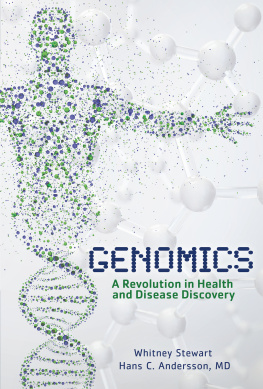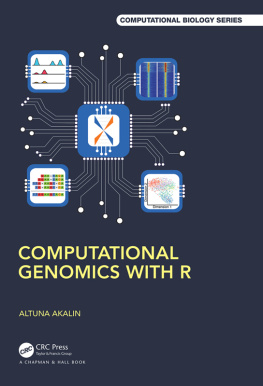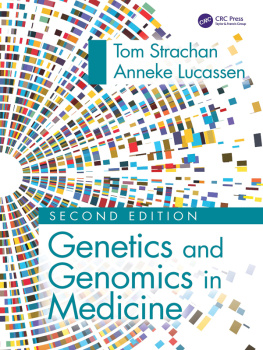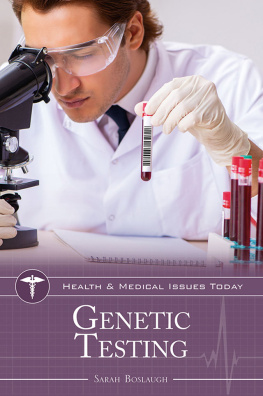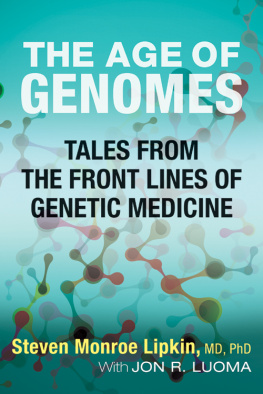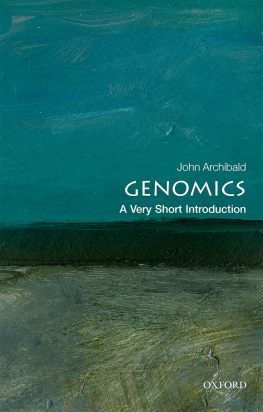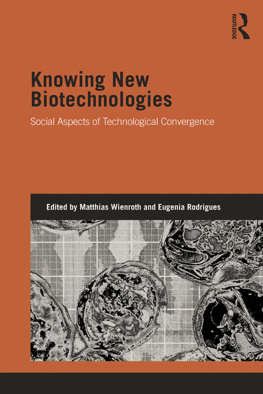THE GENOME INCORPORATED
Theory, Technology and Society
Series Editor: Ross Abbinnett, University of Birmingham, UK
Theory, Technology and Society presents the latest work in social, cultural and political theory, which considers the impact of new technologies on social, economic and political relationships. central to the series are the elucidation of new theories of the humanity-technology relationship, the ethical implications of techno-scientific innovation, and the identification of unforeseen effects which are emerging from the techno-scientific organization of society.
With particular interest in questions of gender relations, the body, virtuality, penality, work, aesthetics, urban space, surveillance, governance and the environment, the series encourages work that seeks to determine the nature of the social consequences that have followed the deployment of new technologies, investigate the increasingly complex relationship between the human and the technological, or addresses the ethical and political questions arising from the constant transformation and manipulation of humanity.
Other titles in this series
Contested Categories
Life Sciences in Society
Edited by Susanne Bauer and Ayo Wahlberg
ISBN 978 0 7546 7618 8
Technology and Medical Practice
Blood, Guts and Machines
Edited by Ericka Johnson and Boel Berner
ISBN 978 0 7546 7836 6
The Genome Incorporated
Constructing Biodigital Identity
KATE ORIORDAN
University of Sussex, UK
First published 2010 by Ashgate PUBLISHING
Published 2016 by Routledge
2 Park Square, Milton Park, Abingdon, Oxon OX14 4RN
711 Third Avenue, New York, NY 10017, USA
Routledge is an imprint of the Taylor & Francis Group, an informa business
Copyright Kate ORiordan 2010
All rights reserved. No part of this publication may be reproduced, stored in a retrieval system or transmitted in any form or by any means, electronic, mechanical, photocopying, recording or otherwise without the prior permission of the publisher.
Notice:
Product or corporate names may be trademarks or registered trademarks, and are used only for identification and explanation without intent to infringe.
Kate ORiordan has asserted her right under the Copyright, Designs and Patents Act, 1988, to be identified as the author of this work.
British Library Cataloguing in Publication Data
ORiordan, Kate, 1971
The genome incorporated: constructing biodigital identity.
-- (Theory, technology and society)
1. Genomics--Social aspects. 2. Genetics in mass media.
3. Genetics in mass media--Case studies.
I. Title II. Series
572.8-dc22
Library of Congress Cataloging-in-Publication Data
ORiordan, Kate, 1971
The genome incorporated : constructing biodigital identity / by Kate ORiordan.
p. cm. -- (Theory, technology and society)
Includes index.
1. Genetics in mass media. 2. Genomics--Social aspects. 3. Human genome. I. Title.
P96.G45.O75 2010
791.4369--dc22
2009049332
ISBN 9780754678519 (hbk)
Contents
List of Figures
Acknowledgements
The support of the Economic and Social Research council (ESRc) is gratefully acknowledged. This work is affiliated to the programme of the ESRC Genomics Network at CESAGEN. In this capacity particular thanks go to Professors Maureen McNeil, Brian Wynne and Ruth Chadwick, and to Dr Joan Haran and Dr Adrian Mackenzie for collaboration, funding, and intellectual support.
The support of the Centre for Material Digital Culture and the Department of Media, Film and Music at the University of Sussex is also gratefully acknowledged. Particular thanks go to Dr Caroline Bassett, to my colleagues in the centre, the department and the university more widely for feedback and support. Thank you also to all the participants in the Biodigital Lives workshop, July 2009 for feedback, ideas and comments.
The support of the University of California at Santa Cruz is also gratefully acknowledged. Part of this work was written up in the peaceful and intellectually stimulating environment of the Centre for Cultural Studies. Particular thanks go to Professors Karen Barad, Carla Freccero, Donna Haraway, Lourdes Martinez-Echazabal, Marcia Ochoa and Jenny Reardon for support during my participation in the visiting scholars programme (January-July 2009), as well as for feedback on my work.
I would also like to acknowledge and thank the many people who agreed to give up their time, and offered their expertise, by supporting or participating in the research. Particular mention goes to Dr Mary Bryson, Director of the Center for Cross-Faculty Inquiry at UBC, Oron Catts, Director of SymbioticA, the Centre of Excellence in Biological Arts at the University of Western Australia, Mark Diekhans at the UCSC Genome Browser, Professor Ian Hacking, Philosopher of Science, Lisa Matthews poet, novelist, creative writing tutor and writer in residence at PEALS, Predrag Pajdic, the London based artist, art historian and curator, Brian Whitley Managing Director of Genomic Health, Professor Andrew Yang at the School of the Art Institute of Chicago.
Other networks and events to which I owe ideas, feedback and discussion, and to whom I am grateful for engagement with my work, include the participants of: the Media and Humanity Conference at the LSE (July 2008, London); the Association of Internet Researchers (AoIR) and particularly of IR 9, (October 2008, Copenhagen); the Society for the Social Studies of Science (4S); the Media and Film seminar series at the University of Sussex (2007-2008); the CMIS Studies seminar series at the University of Brighton (2008); the Virtually McLuhan: Theorising Code and Digital Life seminar series at UBC (2009); the Center for Cultural Studies Colloquium at UCSC (2009); the Digital Communication and Culture Section of the European Communication Research and Education Association (ECREA); the Media Culture and Communication Association (MeCCSA); and the participants in the Art, Politics, and the Life Sciences workshop series at Lancaster (2006).
Personal thanks also goes to all of those family, friends and colleagues who have helped me get through this endeavour in multiple ways, including reading drafts, putting up with my absence, and helping me take breaks. Special additional mention and thanks in this respect go to Nannette Aldred, Caroline Bassett, Joan Haran, Maureen McNeil, Ella ORiordan Scott, Molly ORiordan and Jenny Reardon.
Chapter 1
Introduction
Setting the scene and positioning the genome
This book is about the human genome in media cultures. It is about a shift from the singular Human Genome Project of the 1990s to the current plurality of genomes across media cultures. It follows the proliferation of genomes across multiple media sites, as human genomics finds audiences, markets and publics in everyday life. This book is not then about life of the genome under laboratory conditions, or its life in scientific journals, but it is about the genome under cultural conditions and in media cultures.
Consonant with a media approach, this introduction starts with an image that acts as a casting off point for the various directions that this book takes. A few days ago as I walked a trail on San Bruno mountain in San Francisco, (California, USA), I looked back to admire the views of downtown San Francisco. As I looked over the film-like towers of the city there motored over this already rather surreal scene, a zeppelin, also known as a dirigible or rigid airship. Once a familiar figure in the skies of Europe and the USA, airships have been out of the business of commercial and military air travel since the late 1930s. So what was this relic of the early twentieth century doing in the skies of one of the most high tech cities in the USA in 2009?


